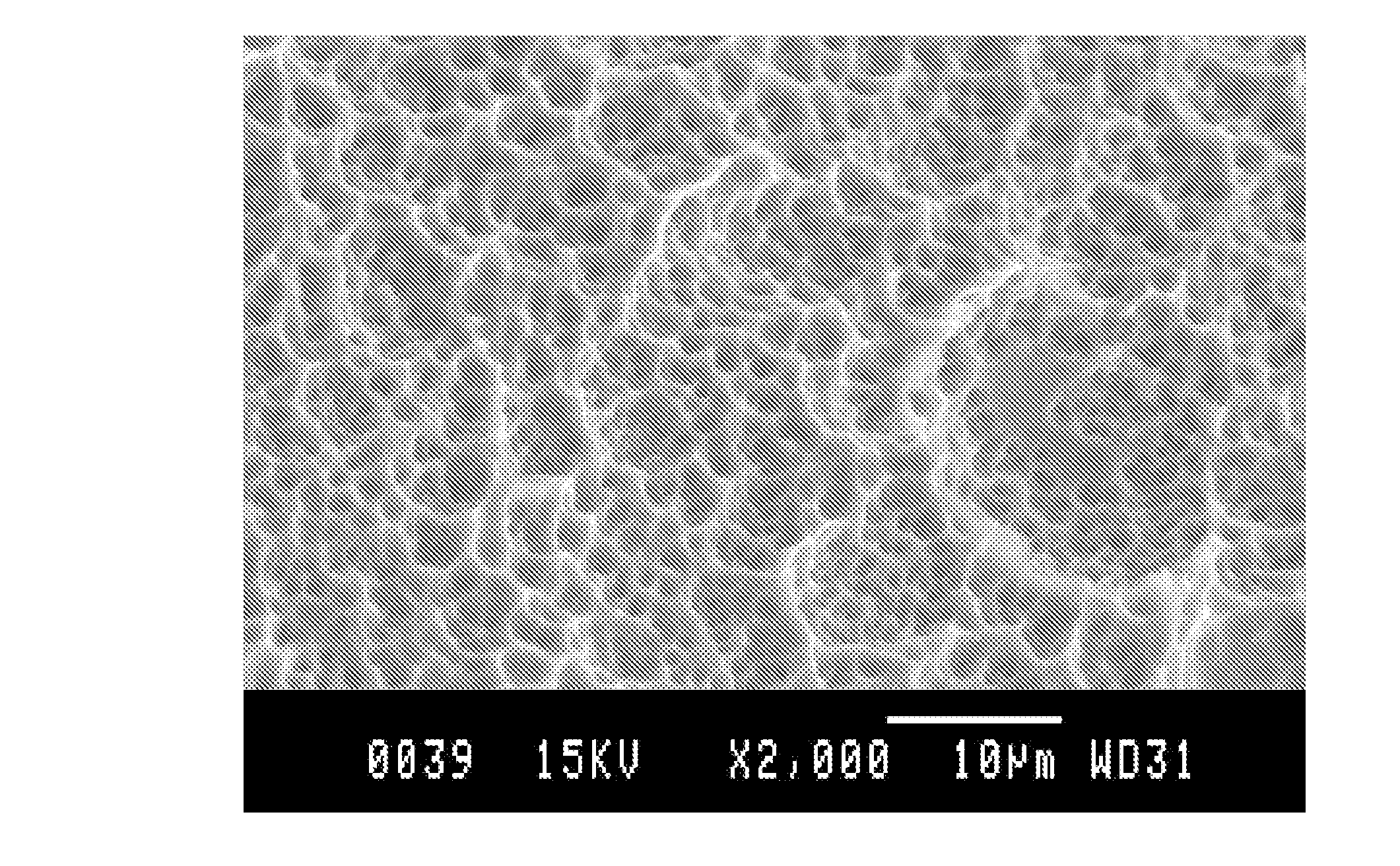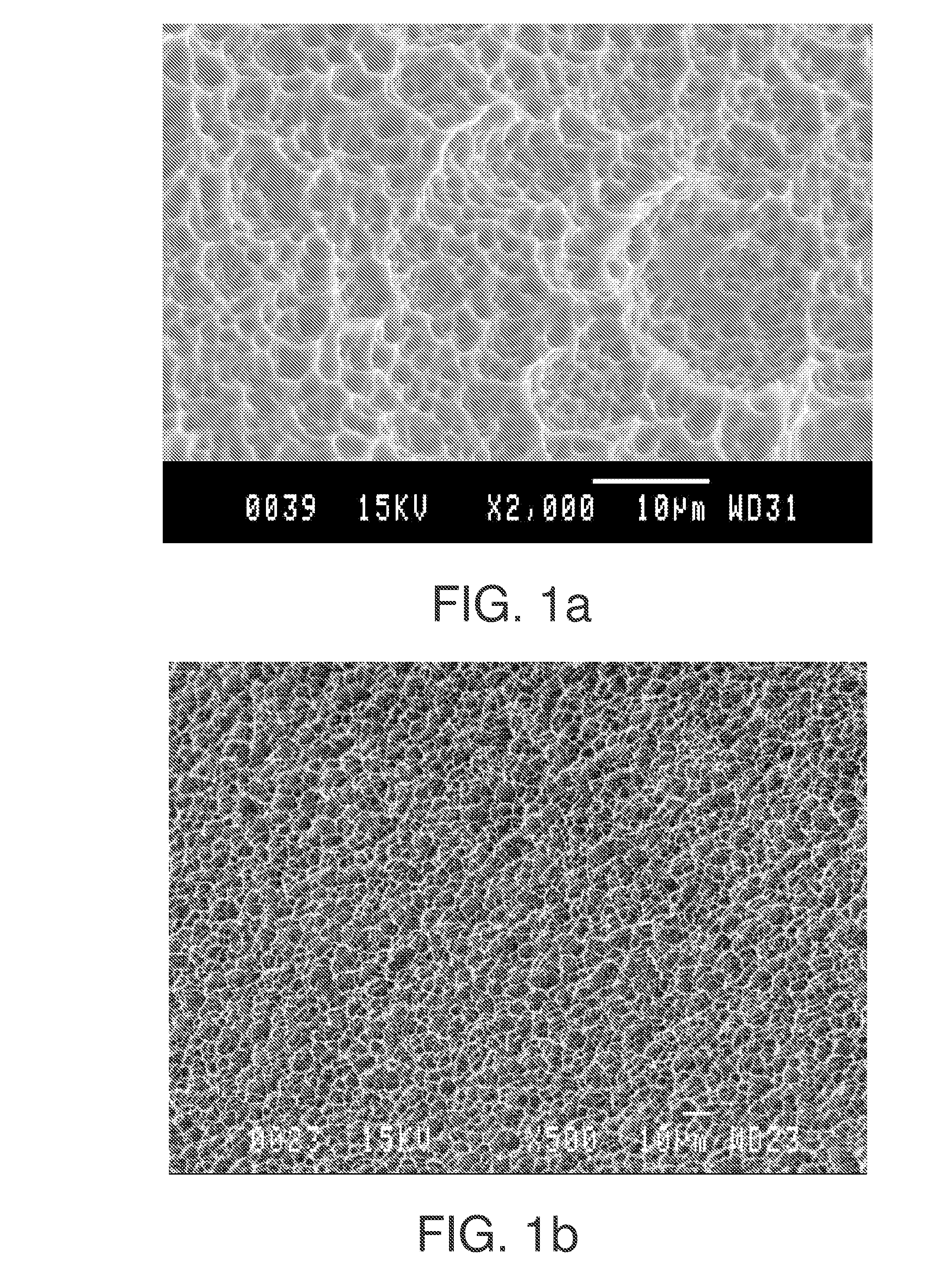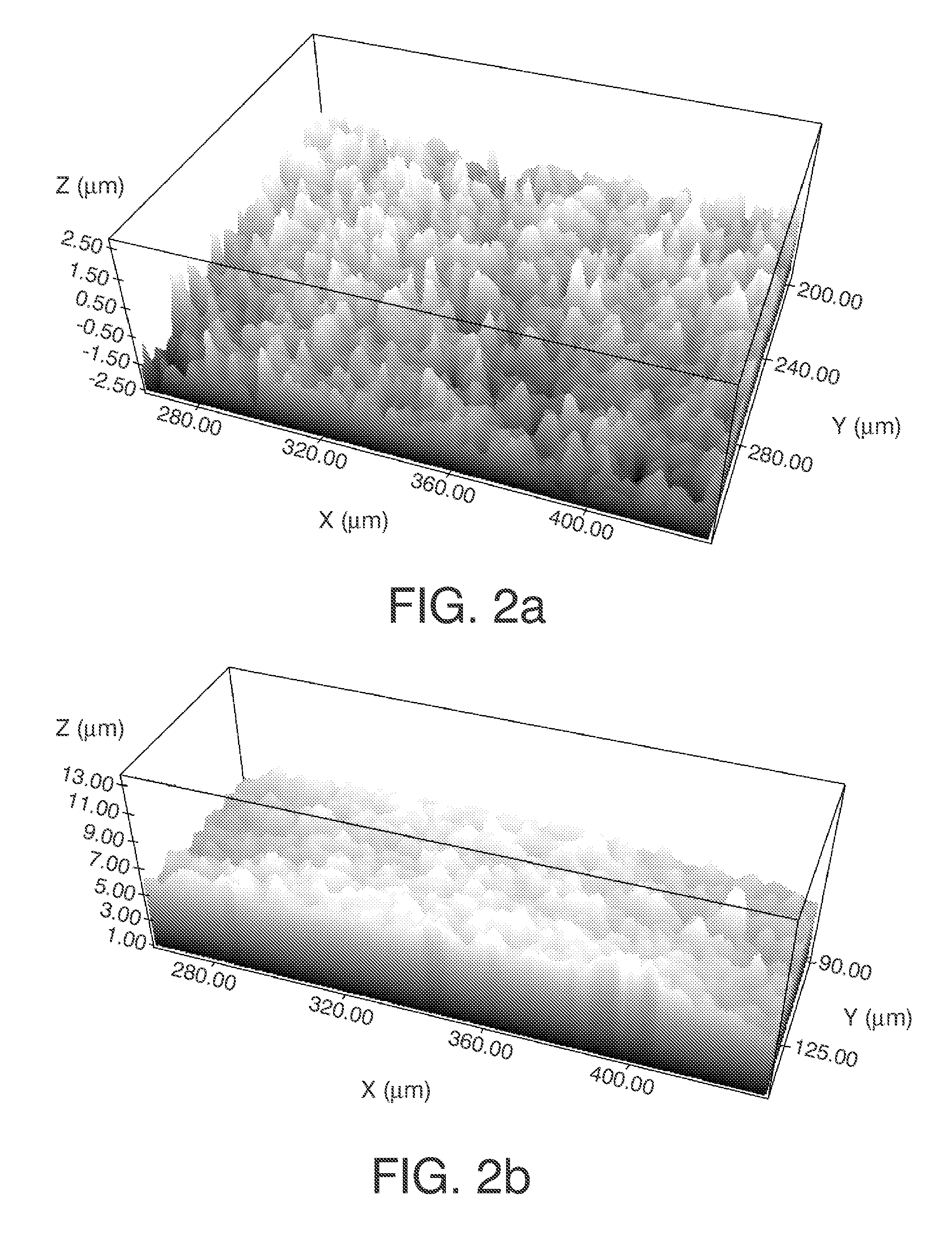Method for obtaining a surface of titanium-based metal implant to be inserted into bone tissue
a metal implant and titanium oxide technology, applied in the field of metal implants to be inserted into bone tissue, can solve the problems of not having a very stable titanium oxide layer, not reducing the release of metal ions to the medium, and reducing the thickness of surface titanium oxid
- Summary
- Abstract
- Description
- Claims
- Application Information
AI Technical Summary
Benefits of technology
Problems solved by technology
Method used
Image
Examples
example 1
Obtaining a Titanium Dental Implant with a Surface Obtainable by the Method of the Invention
[0057]A Defcon TSA threaded cylindro-conical endosseous implant made of commercially pure titanium was subjected to a projection of 25 μm particles of aluminium oxide under a pressure of 3 atm, placing the exit nozzle perpendicular to the surface to be treated, at a distance of between 2 and 3 cm. After the sandblasting, it was cleaned with pressurized air and subsequently submersed in pure water in ultrasound for 10 minutes. It was then dried by means of compressed air.
[0058]An aqueous solution was then prepared with the following composition: 28.8% by volume of sulfuric acid and 0.024% by volume of hydrofluoric acid. The beaker with the reagent was placed in a thermal bath, setting the temperature to be reached by the reagent to 75°± / −2° C. Once the desired temperature of the reagent was reached, the chemical treatment was performed by means of immersing the previously sandblasted implant i...
example 2
Characterization of the Surface Obtained in Example 1
Morphology
[0060]The morphology of the surface obtained in Example 1 was studied by means of surface micrographs and measurement of the roughness by confocal microscopy.
Surface Micrographs
[0061]The surface micrographs were carried out in a JEOL JSM 840 scanning electron microscope, with a scanning beam potential of 15 kV.
[0062]FIG. 1b shows a (150×) micrograph of said surface in which it is seen that the surface has very characteristic surface roughness, with values of roughness Ra (average roughness) of about 1 μm, characterized by a rounded morphology with sharp outer edges and the presence of a homogeneously distributed deep porosity, due to the action of the acid etching on the surface.
[0063]This level of roughness allows complying with the requirements indicated by various scientific articles (Buser et al. 1991, Cochran et al. 1994, Martin et al. 1995, Wennerberg et al. 1996, Wennerberg et al. 1997, Buser et al. 1998, Lazzara ...
example 3
Cell Response of the Surface of a Titanium Sample Obtained by a Method Similar to that Described in Example 1
[0074]A study was conducted by the 063-13 research group (Pharmacology Department, School of Medicine and Odontology, Univ. Santiago de Compostela, Spain) for the biological evaluation of titanium samples (commercial pure titanium discs with a diameter of 5 mm) treated by means of a method similar to that described in Example 1.
[0075]Human osteoblasts were seeded in work samples (8×103 cells / disc in triplicate) in modified Dulbecco culture medium, with 10% fetal bovine serum and 1% antibiotic solution. Cell bioactivity (indicator of the cytotoxicity of the surface) and alkaline phosphatase production (indicator of bone matrix production by the osteoblasts) of the surface obtained by the method of the invention (code 03 / 136-14) were measured with respect to those of an untreated surface of the same titanium machined (code 03 / 136-07), another untreated surface of the same titan...
PUM
| Property | Measurement | Unit |
|---|---|---|
| Temperature | aaaaa | aaaaa |
| Temperature | aaaaa | aaaaa |
| Temperature | aaaaa | aaaaa |
Abstract
Description
Claims
Application Information
 Login to View More
Login to View More - R&D
- Intellectual Property
- Life Sciences
- Materials
- Tech Scout
- Unparalleled Data Quality
- Higher Quality Content
- 60% Fewer Hallucinations
Browse by: Latest US Patents, China's latest patents, Technical Efficacy Thesaurus, Application Domain, Technology Topic, Popular Technical Reports.
© 2025 PatSnap. All rights reserved.Legal|Privacy policy|Modern Slavery Act Transparency Statement|Sitemap|About US| Contact US: help@patsnap.com



